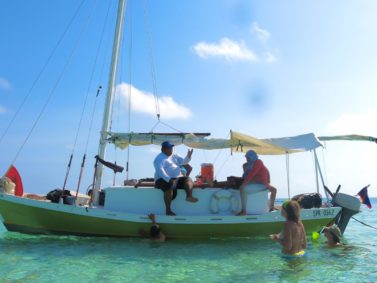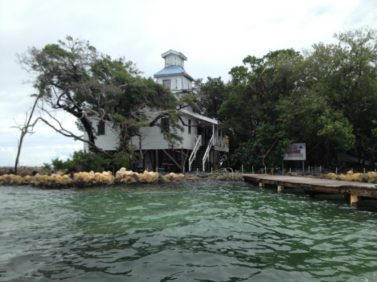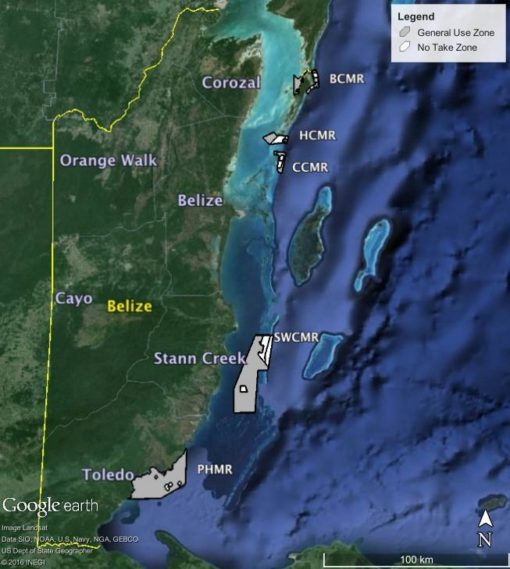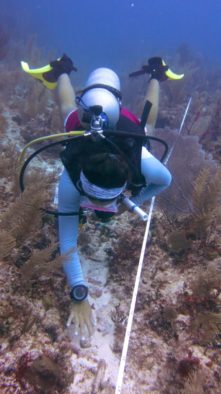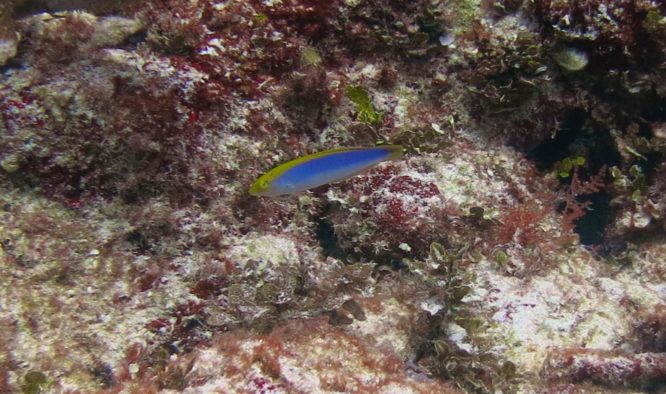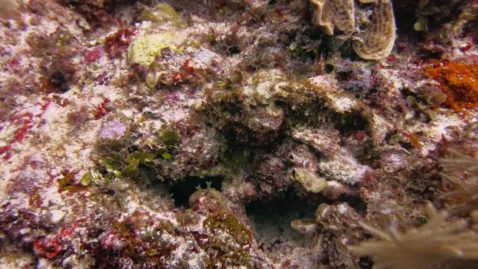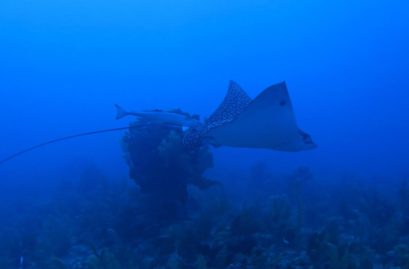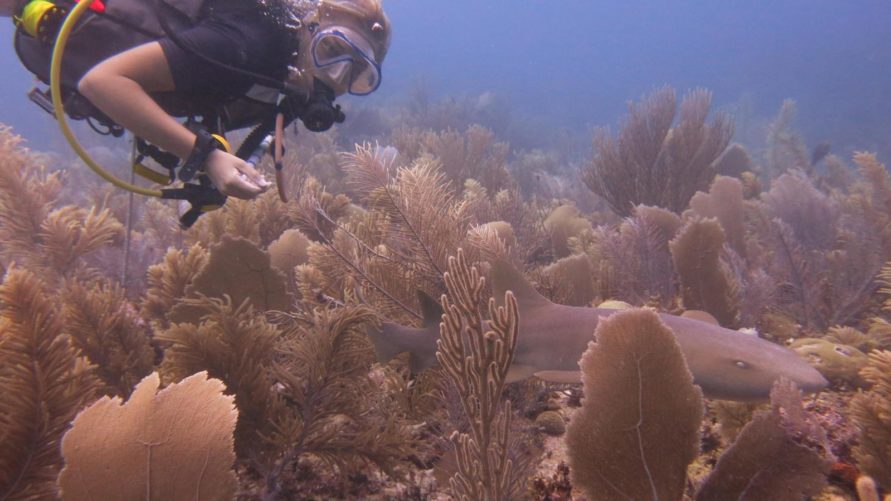The waves lapped softly against the wooden hull of Brujula as wind filled her sails, carrying us to our first destination, South Water Caye Marine Reserve, Belize. Nervous and excited, we didn’t quite know what to expect from our first round of lionfish surveys.
Invasive lionfish populations have exploded across the Caribbean. Their ever-increasing populations rapidly consume ecologically and commercially important fish and invertebrates in reefs, mangroves, and seagrass habitats, threatening ecosystems and fisheries.

Lionfish survey team gearing up to get in the water! L-R: Anna (BV), Julia (BV), Eli (BAS), and Tanya (TIDE). Capt. Brian overseeing in the background! Photo credit: Regina (Brujula Sailing Trips and Transport)
Our mission was clear: assess the relative abundance of lionfish, their prey, and competing predators (e.g. sharks, groupers, moray eels).
Last year Blue Ventures hosted eleven biologists at our Bacalar Chico Dive Camp to train in lionfish survey methods – in preparation for a mammoth survey effort to monitor populations in five marine reserves.
For this survey, our team was six: Elias Cantun, Marine Biologist and Fisheries Officer stationed at South Water Caye, Eli Romero, Marine Biologist for the Belize Audubon Society, Tanya Barona, Marine Biologist for the Toledo Institute for Development and Environment (TIDE), Daniela Escontrela, Field Scientist for Blue Ventures in Bacalar Chico, and us – the BV Science Interns, responsible for field logistics and data collection.
The Plan? Conduct “Level 3” lionfish focused surveys in five marine reserves along the Belize coast: Bacalar Chico, South Water Caye, Port Honduras, Caye Caulker, and Hol Chan.
Using Dr Stephanie Green’s population model, the data we collect will determine the threshold densities of lionfish within each marine reserve – the maximum number of lionfish that a reef can withstand before these voracious predators significantly impact the ecosystem.
Blue Ventures and the Belize Fisheries Department will together use these data to develop management plans for each reserve, and to develop a stock assessment model for Belize’s emergent lionfish fishery.
Our surveys in numbers:
3 months
5 marine reserves
16 researchers
50 sites
445 tanks
>20,000 hours underwater
45,810m² reef surveyed
171,273 – number of times Anna played the song Lucy while gearing up, cleaning equipment, preparing data sheets, studying marine reserve maps, entering data…
Each new site came with its own set of challenges, and we quickly learned that even the best laid plans could crumble under waves of broken gear, non-viable survey sites (which were randomly selected using habitat maps), fuel shortages, and our biggest foe: bad weather. In South Water Caye we tried doing surveys-by-sail to reduce our carbon footprint and to support traditional Sarteneja boat-building. Unfortunately, using a sailboat made logistics even more difficult and it was very time consuming moving from survey site to survey site, so we swapped back to using skiffs for surveys in all other marine reserves. Despite these many obstacles, we persevered to achieve our goals and successfully surveyed 50 sites!
Our perseverance was further rewarded by the amazing coral reefs we visited. We experienced incredible visibility in Bacalar Chico, and dived with massive schools of the endemic species, the social wrasse (Halichoeres socialis), particularly threatened by invasive lionfish.
Spotted eagle rays and nurse sharks were our dive buddies in Caye Caulker and Hol Chan, and at one sight we were even accompanied by a pod of dolphins! The reefs of Belize truly are alive!
Conducting these surveys has been such an amazing and enlightening experience, and it is incredibly gratifying to know that all of our efforts will result in the maintenance and protection of Belize’s spectacular reefs.
The data collected through these surveys will play a vital role in controlling lionfish populations and maintaining healthy reefs across Belize, and it was only made possible thanks to the generous support of The Summit Foundation and MAR Fund. We are grateful for ongoing partnership with the Belize Fisheries Department and Dr Stephanie Green. A big thank you also to the Toledo Institute for Development and Environment, Belize Audubon Society, Forest and Marine Reserve Association of Caye Caulker, Blue Sea dive shop (Caye Caulker), Chuck & Robbie’s dive shop (San Pedro) and Brujula Sailing Trips and Transport for making this ambitious and important effort possible!
If you want to learn more about how the coastal communities are tackling the lionfish invasion in Belize, then check out our new photo story: Managing Belize’s Lionfish Infestation or get involved and join us on a short lionfish dive trip.


